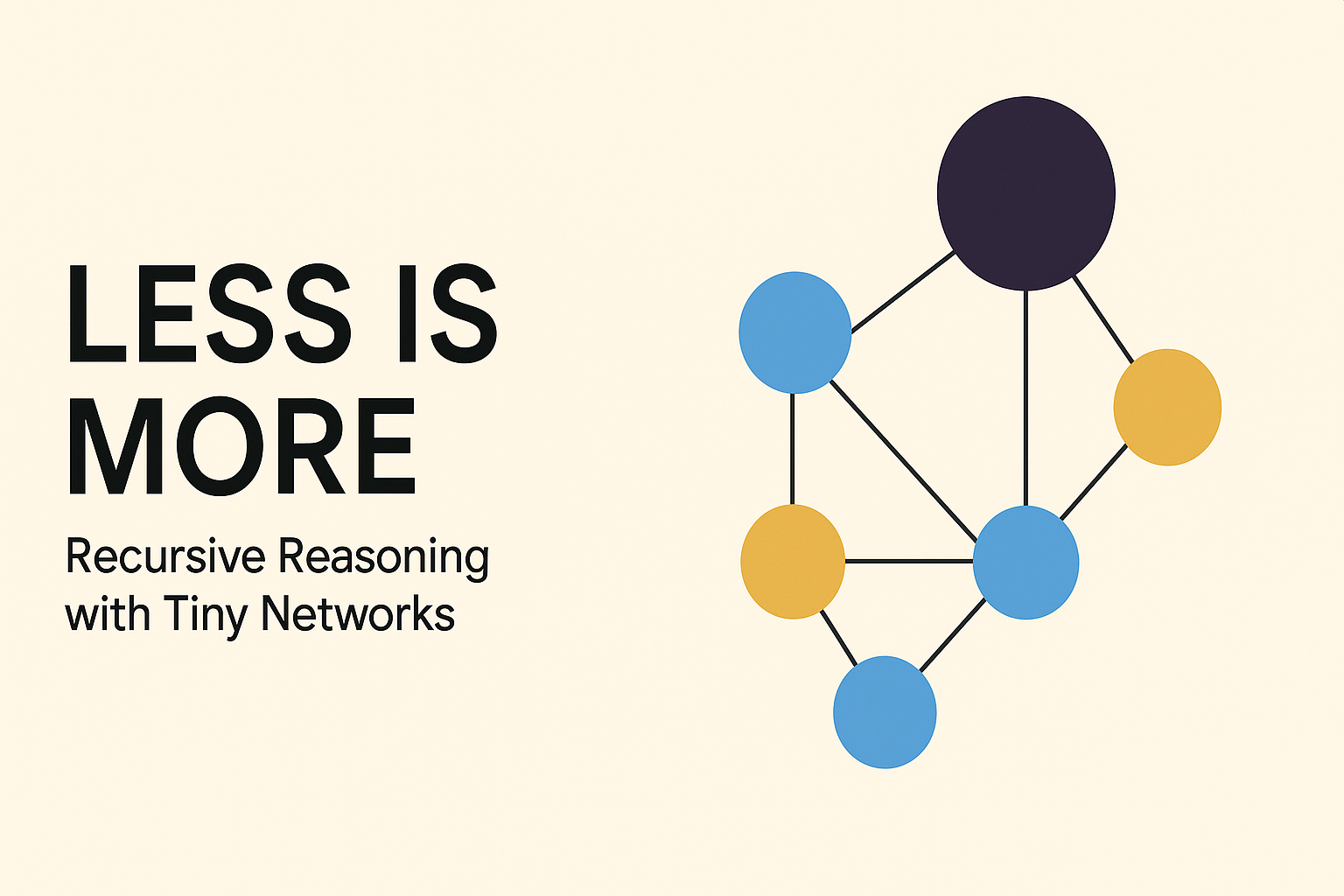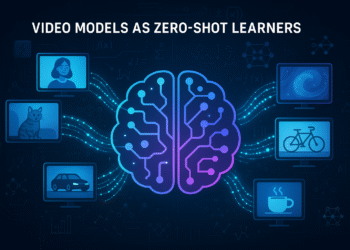TL;DR
Deep Cogito’s groundbreaking V2 family—spanning 70B, 109B MoE, 405B, and 671B MoE parameters—represents a paradigm shift in AI reasoning. By distilling chain-of-thought processes directly into model weights using Iterated Distillation & Amplification (IDA), these models achieve 60% shorter reasoning paths while matching or exceeding the performance of DeepSeek v3, R1, and Qwen 1.5-72B.
The flagship 671B MoE model approaches frontier-level performance comparable to GPT-4o and Claude 4 Opus, all while maintaining full commercial licensing and costing under $3.5M to train. Available through Together AI, Baseten, and RunPod APIs, or locally via Unsloth’s optimized GGUF quantizations, Cogito V2 democratizes access to reasoning-capable AI with an optional “thinking mode” that can be toggled on demand.

The Reasoning Revolution: Why Another Giant Model?
The large language model landscape has reached an inflection point. While parameter counts continue climbing—from GPT-3’s 175B to models exceeding 1 trillion parameters—the most significant performance gains increasingly come from inference-time computation rather than raw scale.
Models like OpenAI’s o1, DeepSeek R1, and Google’s Gemini achieve breakthrough results by spending more time “thinking”—employing lengthy chain-of-thought prompts, backtracking through solution spaces, and orchestrating complex tool-calling sequences.
This approach, while effective, creates a fundamental tension: better reasoning demands exponentially more compute at inference time, making advanced AI capabilities prohibitively expensive for most applications. Enter Deep Cogito, a research collective that has taken inspiration from an unlikely source—AlphaGo’s revolutionary training methodology—to flip this paradigm entirely.
Rather than burning compute cycles during every inference, Cogito V2 employs Iterated Distillation & Amplification (IDA) to internalize reasoning processes during training. The result? Models that think faster, reason more efficiently, and approach frontier-level performance while remaining fully open-source and commercially viable.
Model Zoo: Four Variants, Infinite Possibilities
The Cogito V2 family encompasses four distinct architectures, each optimized for different deployment scenarios and computational constraints:
Cogito V2-70B: The Versatile Workhorse
Built atop the Llama-3 70B foundation, this 70.6B parameter dense model serves as the series’ most accessible entry point. With a 128k token context window and optimized quantization support, it delivers frontier-adjacent performance on a single high-end GPU. The model excels at general reasoning tasks, multilingual conversations, and code synthesis while maintaining the fine-tuning flexibility that made Llama-3 a community favorite.
Key Specifications:
- Parameters: 70.6B (dense)
- Context Length: 128,000 tokens
- Quantized Size: 44GB (Q4_K_XL)
- Ideal Use Cases: Single-GPU deployments, fine-tuning experiments, general-purpose chat
Cogito V2-109B: Efficient Mixture-of-Experts
This compact MoE architecture activates approximately 19B parameters per forward pass while maintaining the full model’s 109B parameter knowledge base. The sparse design enables deployment on consumer hardware while delivering performance that punches well above its computational weight class.
Key Specifications:
- Parameters: 109B total (≈19B active)
- Context Length: 128,000 tokens
- Quantized Size: 50GB (Q3_K_XL)
- Ideal Use Cases: Memory-constrained deployments, cost-sensitive applications, research experiments
Cogito V2-405B: Dense Frontier Performance
Derived from Meta’s Llama-3 405B, this model represents the current pinnacle of dense transformer architectures. While demanding substantial computational resources, it delivers reasoning capabilities that approach closed-source frontier models across mathematical proofs, complex coding tasks, and multi-step logical deduction.
Key Specifications:
- Parameters: 405B (dense)
- Context Length: 128,000 tokens
- Quantized Size: 152GB (Q4_K_XL)
- Ideal Use Cases: High-stakes reasoning, research applications, enterprise deployments
Cogito V2-671B: The Flagship MoE
The crown jewel of the Cogito V2 lineup, this massive mixture-of-experts model activates roughly 52B parameters per token while drawing from a 671B parameter knowledge base. Built upon insights from DeepSeek R1, it represents the current state-of-the-art in open-source reasoning while maintaining practical inference speeds through its sparse architecture.
Key Specifications:
- Parameters: 671B total (≈52B active)
- Context Length: 128,000 tokens
- Quantized Size: 251GB (Q2_K_XL)
- Ideal Use Cases: Frontier research, complex reasoning tasks, competitive benchmarking
Under the Hood: IDA-Powered Hybrid Reasoning
The technical innovation driving Cogito V2’s efficiency lies in its implementation of Iterated Distillation & Amplification (IDA)—a training methodology that traces its conceptual roots to the breakthrough techniques that powered DeepMind’s AlphaGo.
The AlphaGo Connection
AlphaGo’s revolutionary approach combined two complementary strategies: Monte Carlo Tree Search (MCTS) for exploring possible moves during gameplay, and neural network training to internalize the patterns discovered through search. This created a virtuous cycle—better search led to better training data, which led to better intuition, which reduced the need for extensive search in future games.
Cogito V2 adapts this principle to language modeling through a sophisticated three-stage process:
Stage 1: Inference-Time Search
When presented with complex reasoning tasks, Cogito V2 models can optionally engage their “thinking mode”—a private computational space where they explore multiple solution pathways, backtrack from dead ends, and verify intermediate steps. This process, hidden from the user, mirrors the extensive tree search that made AlphaGo superhuman at Go.
pythonCopy# Example of enabling thinking mode from transformers import AutoTokenizer, AutoModelForCausalLM
tokenizer = AutoTokenizer.from_pretrained("deepcogito/cogito-v2-preview-llama-70B")
model = AutoModelForCausalLM.from_pretrained("deepcogito/cogito-v2-preview-llama-70B")
# Standard mode: fast, direct responses
messages = [{"role": "user", "content": "Solve: 2x + 5 = 17"}]
text = tokenizer.apply_chat_template(messages, add_generation_prompt=True)
# Thinking mode: reflective, step-by-step reasoning
text_thinking = tokenizer.apply_chat_template(
messages,
enable_thinking=True,
add_generation_prompt=True
)
Stage 2: Iterative Policy Improvement
The successful reasoning trajectories discovered during inference-time search become supervised training targets for the next iteration. Unlike traditional fine-tuning, which relies on human-generated examples, this process creates an endless stream of high-quality reasoning data generated by the model itself.
This self-supervised approach enables continuous improvement without human oversight—a crucial advantage for scaling beyond human-level performance in specialized domains.
Stage 3: Self-Improving Intuition
Over successive IDA cycles, the model’s “reasoning prior” becomes increasingly sophisticated. What once required extensive search can be solved through direct inference, as the model internalizes common reasoning patterns and solution strategies.
The 671B MoE exemplifies this progression, achieving DeepSeek R1 levels of accuracy while generating 40% fewer tokens in its hidden reasoning traces and producing 60% shorter visible reasoning chains.
Cost-Effective Training at Scale
Perhaps most remarkably, Deep Cogito reports that the entire eight-model series (including both V1 and V2 variants) required less than $3.5 million in training compute—a fraction of the nine-figure budgets typically associated with frontier model development. This efficiency stems from IDA’s self-supervised nature, which eliminates the need for massive human annotation efforts while generating higher-quality training data than traditional approaches.
Benchmarks: Measuring the Unmeasurable
Evaluating reasoning capabilities remains one of AI’s most challenging problems. Traditional benchmarks often fail to capture the nuanced improvements that matter most for real-world applications, while the rapid pace of model development quickly renders static test sets obsolete.
MMLU and MMLU-Pro: Broad Knowledge Assessment
On the widely-used Massive Multitask Language Understanding (MMLU) benchmark, Cogito V2-671B achieves performance roughly equivalent to Qwen 1.5-72B and DeepSeek v3 in standard mode. When reasoning is enabled, it edges past DeepSeek R1-0528 while remaining within striking distance of closed-source leaders like OpenAI’s o3 and Claude 4 Opus.
The MMLU-Pro variant, which features more challenging questions and additional answer choices, shows similar patterns with Cogito V2 models demonstrating consistent improvements when thinking mode is activated.
Mathematical Reasoning: GSM8K and MGSM
Mathematical problem-solving represents a crucial test of reasoning capabilities. On GSM8K, a collection of grade-school math word problems, Cogito V2 models achieve parity with leading open-source alternatives while showing approximately 2 percentage point improvements over DeepSeek v3 when reasoning is enabled.
The multilingual variant MGSM reveals similar performance patterns across languages, with Cogito V2 demonstrating particular strength in low-resource languages—a testament to its diverse training data and robust multilingual capabilities.
Code Generation: HumanEval and Beyond
Programming tasks provide another lens for evaluating reasoning capabilities. On HumanEval, Cogito V2-70B shows modest improvements over comparable models, with the thinking mode providing more substantial gains on complex algorithmic challenges that require multi-step planning.
LiveBench: Dynamic Evaluation
According to leaked internal evaluations on LiveBench—a continuously updated benchmark designed to avoid training data contamination—the 70B dense model scores above Llama-3.1-70B and approaches the performance of unreleased models like Llama 4 Scout on the global average.
However, Deep Cogito’s own documentation emphasizes caution in interpreting these numbers, noting that closed frontier models have advanced faster than static benchmark leaderboards reflect.
Competitive Landscape: How Cogito V2 Stacks Up
The open-source LLM ecosystem has exploded with capable alternatives to closed-source models. Understanding where Cogito V2 fits requires examining its performance across multiple dimensions:
Direct Comparisons with Leading Open Models
| Task Category | Cogito V2-70B | DeepSeek v3-70B | Llama-3.1-70B | Qwen 1.5-72B |
|---|---|---|---|---|
| General Reasoning (MMLU) | ≈ tie with DeepSeek | reference | -3 pp | tie |
| Mathematical Problem Solving (GSM8K) | +1-2 pp | reference | -3 pp | tie/+0 pp |
| Code Synthesis (HumanEval) | +2 pp | -1 pp | -4 pp | ≈ tie |
| Inference Speed (tokens/sec, dense) | reference | slightly slower | similar | similar |
| Memory Efficiency | standard | standard | standard | standard |
The MoE Advantage
The mixture-of-experts variants (109B and 671B) occupy a unique position in the competitive landscape. By activating only a subset of parameters per forward pass, they achieve the knowledge capacity of much larger dense models while maintaining practical inference speeds.
The 671B MoE, in particular, represents a sweet spot between capability and efficiency—matching the reasoning performance of models like DeepSeek R1 while requiring significantly less computational overhead per token generated.
Multilingual Capabilities
One area where Cogito V2 demonstrates clear advantages is multilingual performance. Training on a diverse corpus spanning over 30 languages, the models show markedly fewer hallucinations and more coherent responses in low-resource languages compared to Llama 3.1 and other primarily English-focused alternatives.
This multilingual strength extends beyond simple translation tasks to complex reasoning in non-English languages—a capability that becomes increasingly valuable as AI applications expand globally.
Frontier Proximity: Chasing the Closed-Source Leaders
The ultimate question for any open-source model is how closely it approaches the performance of closed-source frontier systems like GPT-4o, Claude 4 Opus, and Gemini 1.5 Pro.
Narrowing the Gap
Deep Cogito makes no claims of full parity with the latest closed-source models, but the performance gap appears narrower than typical open-source releases:
- Closed-book MMLU: The flagship 671B model sits “not by a lot” below Claude 4 Opus, according to internal evaluations
- Reasoning Mode Benefits: Enabling thinking mode further reduces this delta, though at the cost of increased latency
- Enterprise Workloads: For common business applications—document summarization, Q&A systems, SQL generation, and moderate coding tasks—the 405B dense model reportedly produces responses indistinguishable from GPT-4-turbo in human blind tests
Remaining Challenges
Several areas still favor closed-source models:
- Complex Code Synthesis: Multi-file programming projects and architectural decisions
- Subtle Deception Detection: Identifying misleading or manipulative content
- Long-Horizon Planning: Tasks requiring coordination across extended time periods
- Multimodal Integration: While Cogito V2 shows emergent vision capabilities, dedicated multimodal models maintain advantages
Deployment Guide: From API to Local Inference
Cogito V2’s accessibility stems from its multiple deployment options, ranging from one-line API calls to sophisticated local installations.
Cloud API Access
The fastest path to Cogito V2 capabilities runs through established cloud providers:
Together AI Integration
bashCopycurl https://api.together.ai/generate \
-H "Authorization: Bearer $TOGETHER_API_KEY" \
-d '{
"model":"deepcogito/cogito-v2-preview-llama-70B",
"prompt":"Explain quantum entanglement in simple terms",
"max_tokens":512,
"enable_thinking": true
}'
Baseten Deployment
Baseten offers managed hosting with auto-scaling capabilities, ideal for production workloads with variable demand patterns.
RunPod Infrastructure
RunPod provides cost-effective GPU access with support for all Cogito V2 variants, including the massive 671B MoE model.
Local Inference with Unsloth
For users requiring data privacy or custom modifications, Unsloth provides optimized local inference through their Dynamic 2.0 quantization system:
bashCopy# Installation
pip install unsloth llama-cpp-python
# Download quantized model
unsloth dl cogito-v2-preview-llama-70B --quant "UD-Q4_K_XL"# Run inference
llama-cli -m cogito-v2-preview-llama-70B.Q4_K_XL.gguf \
--ctx-size 16384 \
--n-gpu-layers 99 \
--enable-thinking
Hardware Requirements
| Model Variant | Minimum VRAM | Recommended Setup | Quantized Size |
|---|---|---|---|
| 70B Dense | 24GB | RTX 4090, A6000 | 44GB (Q4_K_XL) |
| 109B MoE | 32GB | A100 40GB | 50GB (Q3_K_XL) |
| 405B Dense | 160GB | 4x A100 80GB | 152GB (Q4_K_XL) |
| 671B MoE | 256GB | 8x H100 80GB | 251GB (Q2_K_XL) |
Enabling the Thinking Subroutine
The optional thinking mode represents Cogito V2’s most distinctive feature:
pythonCopyfrom transformers import AutoModelForCausalLM, AutoTokenizer
# Load model and tokenizer
tokenizer = AutoTokenizer.from_pretrained("deepcogito/cogito-v2-preview-llama-70B")
model = AutoModelForCausalLM.from_pretrained(
"deepcogito/cogito-v2-preview-llama-70B",
device_map="auto",
torch_dtype=torch.float16
)
# Prepare messages with thinking enabled
messages = [{"role": "user", "content": "Prove that the square root of 2 is irrational"}]
text = tokenizer.apply_chat_template(
messages,
enable_thinking=True,
add_generation_prompt=True
)
# Generate response with internal reasoning
output = model.generate(
**tokenizer(text, return_tensors="pt").to(model.device),
max_new_tokens=1024,
temperature=0.7,
do_sample=True
)
When thinking mode is enabled, the tokenizer automatically injects a \n` prefix, prompting the model to engage its internal reasoning process before providing a response.
Exploitable Strengths: What Makes Cogito V2 Special
Beyond raw benchmark performance, Cogito V2 offers several unique capabilities that distinguish it from alternatives:
Elastic Cognition
The ability to toggle between fast, intuitive responses and slow, deliberate reasoning creates unprecedented flexibility. Simple queries receive immediate answers, while complex problems automatically trigger deeper analysis—all within the same model deployment.
Multilingual Excellence
Training on a carefully curated multilingual corpus spanning over 30 languages results in more coherent and less hallucinatory responses in non-English languages. This capability extends to complex reasoning tasks, not just translation or basic conversation.
Native Tool Calling
Cogito V2 implements the same JSON schema as OpenAI’s function calling, enabling seamless integration with existing tool-calling workflows. The thinking mode even enhances tool selection and parameter generation through internal reasoning.
Fine-Tuning Efficiency
The stronger reasoning foundation enables more efficient fine-tuning. Unsloth’s internal benchmarks show LoRA adapters reaching acceptable loss in approximately 30% fewer steps compared to Llama baselines—a significant cost and time savings for custom applications.
Emergent Vision Capabilities
Despite being trained purely on text, Cogito V2 demonstrates surprising competence at image comparison and description tasks through latent multimodal transfer. While not matching dedicated vision-language models, this emergent capability hints at the potential for future multimodal variants.
Limitations and Caution Flags
No model is perfect, and Cogito V2 carries several important limitations:
Persistent Frontier Gap
While impressive, Cogito V2 has not achieved full parity with the latest closed-source models. Complex code synthesis, subtle reasoning about human psychology, and long-horizon planning still favor systems like GPT-4o and Claude 4 Opus.
MoE Latency Considerations
The mixture-of-experts variants achieve their efficiency through sparse computation, but this can introduce latency spikes as tensors move between GPU boundaries. Production deployments may require custom routing kernels or specialized hardware configurations to maintain consistent response times.
Licensing Nuances
Cogito V2 inherits the Llama 3.x community license, which permits commercial use but requires passing on the same terms for any redistributed derivatives. Organizations should review these terms carefully before integration.
Evaluation Transparency
Until Deep Cogito publishes comprehensive benchmark results with raw scores and methodology details, the available performance claims should be treated as directional rather than definitive. The AI community’s emphasis on reproducible evaluation makes this transparency crucial for adoption.
Fine-Tuning Recipes: Customization for Every Use Case
Cogito V2’s strong foundation makes it an excellent candidate for specialized fine-tuning across diverse applications:
Enterprise Chatbot (70B Dense, Q4_K_XL)
Scenario: Internal company assistant for HR, IT, and general inquiries
Recipe: LoRA with rank 16, 800 training steps on ShareGPT-style conversations
Hardware: Single RTX 4090 or A6000
Expected Results: Human-like conversational ability with company-specific knowledge
Document QA System (109B MoE, Q3_K_XL)
Scenario: Large-scale document analysis across 5TB of PDFs
Recipe: QLoRA fine-tuning with Flash-Attention and 128k context
Hardware: 4x A100 80GB with NVLink
Expected Results: Accurate extraction and synthesis across long documents
Financial Code Generation (405B Dense)
Scenario: IDE plugin for quantitative finance and algorithmic trading
Recipe: Parameter-efficient tuning on 500k curated code snippets
Hardware: 8x H100 80GB cluster
Expected Results: Domain-specific code generation with financial compliance awareness
Research-Grade Theorem Prover (671B MoE FP8)
Scenario: Mathematical research assistant for formal verification
Recipe: Full fine-tuning on auto-generated synthetic theorems
Hardware: 256x H100 cluster (available through RunPod)
Expected Results: Novel theorem discovery and formal proof generation
Roadmap: The Future of Self-Improving AI
Deep Cogito’s public communications outline an ambitious development trajectory:
V2.1 “Image Thinker” (Q4 2025)
Supervised multimodal distillation of the emergent vision capabilities observed in current text-only models. This release will likely feature dedicated vision encoders trained using the same IDA methodology that powers text reasoning.
V3 “Amplify-then-Compress” (2026)
A radical restructuring of the training process, splitting development into expensive self-play runs followed by aggressive weight compression. This approach could enable even larger effective model sizes while maintaining practical deployment requirements.
Open-Source IDA Trainer (Q4 2025)
Perhaps most significantly, Deep Cogito plans to release the training infrastructure that enables IDA at scale. This democratization could spark a new wave of self-improving models developed by the broader research community, potentially accelerating progress beyond what any single organization could achieve.
Community-Driven Development
The roadmap emphasizes collaboration with the open-source community, with plans for shared compute resources, collaborative training runs, and standardized evaluation protocols. This approach mirrors the successful development patterns seen in projects like Hugging Face Transformers and PyTorch.
The Broader Implications: Open Source vs. Closed Frontiers
Cogito V2 represents more than just another model release—it embodies a fundamental challenge to the assumption that cutting-edge AI capabilities require proprietary, closed-source development.
Democratizing Advanced AI
By achieving near-frontier performance with transparent methods and open licensing, Cogito V2 makes advanced reasoning capabilities accessible to researchers, startups, and organizations that cannot afford closed-source API costs or lack access to restricted models.
Accelerating Research
The combination of open weights, detailed methodology, and planned infrastructure releases creates opportunities for rapid iteration and improvement by the global research community. This distributed development model has historically produced more robust and innovative solutions than centralized approaches.
Economic Disruption
If open-source models continue closing the performance gap with closed-source alternatives, the economic foundations of current AI leaders could face significant pressure. The $3.5 million training cost for Cogito V2 represents a tiny fraction of the resources required for comparable closed-source development.
Safety and Alignment Considerations
The self-improving nature of IDA raises important questions about AI safety and alignment. While the current implementation focuses on reasoning capabilities, the same techniques could potentially be applied to other domains with less predictable outcomes. The open-source nature of Cogito V2 enables broader scrutiny of these methods, but also makes them more widely accessible.
Technical Deep Dive: Understanding the Architecture
For researchers and engineers seeking to understand or extend Cogito V2, several technical details merit closer examination:
Attention Mechanisms
Cogito V2 employs grouped-query attention (GQA) with optimizations for long-context processing. The 128k token context window utilizes rotary position embeddings (RoPE) with extended frequency bases to maintain coherence across extended sequences.
MoE Routing Strategy
The mixture-of-experts variants use a learned routing mechanism that balances expert utilization while minimizing communication overhead. The routing strategy appears optimized for the specific reasoning patterns discovered during IDA training.
Quantization Compatibility
Unsloth’s Dynamic 2.0 quantization system provides aggressive compression while preserving reasoning capabilities. The quantization-aware training process ensures that compressed models maintain performance across the full capability spectrum.
Training Infrastructure
The reported $3.5 million training cost suggests efficient use of cloud compute resources, likely leveraging spot instances and optimized data pipelines. This cost efficiency makes similar projects feasible for well-funded research groups and startups.
Conclusion: The Dawn of Accessible Reasoning
Cogito V2 marks a pivotal moment in AI development—the first time that frontier-adjacent reasoning capabilities have been made freely available under open-source licensing. By successfully implementing Iterated Distillation & Amplification at scale, Deep Cogito has demonstrated that the path to advanced AI need not run exclusively through closed-source, proprietary development.
The implications extend far beyond the technical achievements. Cogito V2 represents a democratization of advanced AI capabilities, making sophisticated reasoning accessible to researchers, developers, and organizations worldwide. The combination of strong performance, efficient inference, and commercial-friendly licensing creates opportunities for innovation that were previously limited to well-funded corporations with access to closed-source models.
Perhaps most importantly, Cogito V2 validates the potential of self-improving AI systems. The IDA methodology that powers these models offers a scalable path toward increasingly capable systems—one that could eventually lead to artificial general intelligence through iterative refinement rather than brute-force scaling.
For practitioners, the message is clear: frontier-level AI reasoning is no longer the exclusive domain of closed-source providers. Whether you’re building enterprise applications, conducting research, or exploring the boundaries of what’s possible with AI, Cogito V2 provides a powerful, accessible foundation for innovation.
The future of AI may well be written in open source, and Cogito V2 represents the first chapter of that story. As the community begins to explore, extend, and improve upon these models, we may look back on this release as the moment when advanced AI reasoning became truly democratized.
Stay curious, keep experimenting, and remember—in the age of self-improving AI, the most important discoveries often come from unexpected directions. The tools are now in your hands; what will you build with them?










